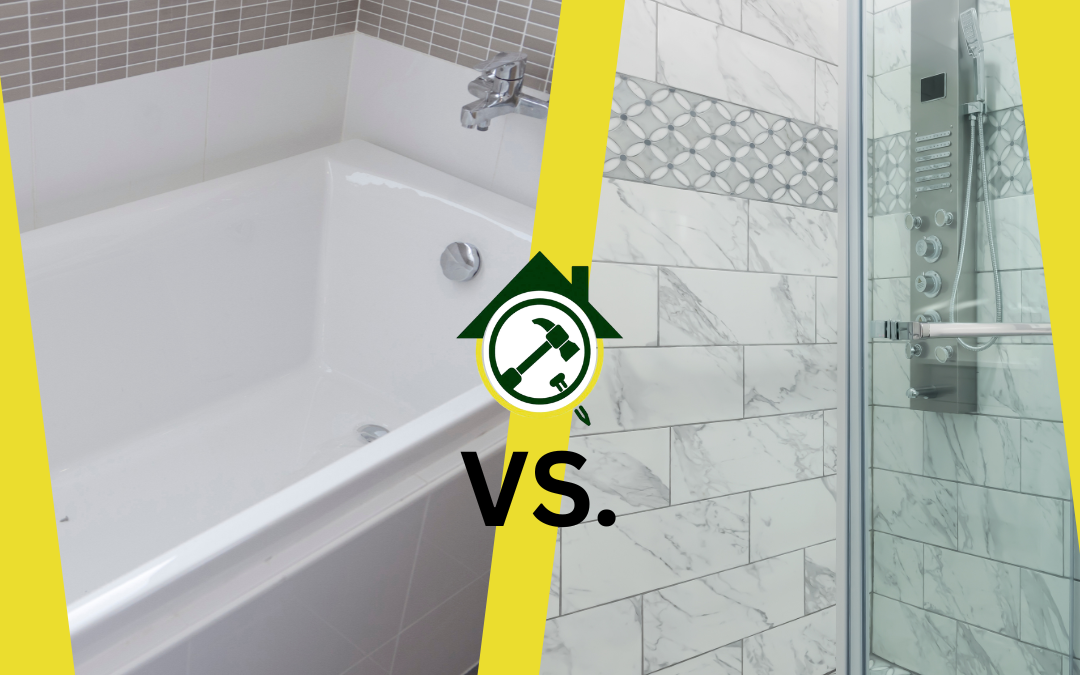A Homeowner’s Guide to Bathroom Remodeling
Remodeling a bathroom often means making one of the most impactful decisions for function, style, and value: should you swap an existing bathtub for a modern walk-in shower, or keep the tub? This choice shapes your daily routine, resale appeal, and the overall vibe of your home. Let’s break down the pros and cons, latest remodeling trends, lifestyle considerations, and expert tips to help you decide what’s best for your space.
Why Homeowners Are Asking This Question
As bathroom renovations have surged in popularity, more homeowners face the “shower vs. tub” dilemma. The answer depends on factors like family needs, personal preferences, accessibility, style goals, and future marketability.
Key reasons to consider remodeling:
- Outdated or inconvenient layouts.
- Desire for a spa-like atmosphere.
- Need to improve accessibility or aging-in-place features.
- Optimizing a small bathroom’s footprint.
Advantages of a Walk-In Shower
1. Enhanced Accessibility and Safety
- Walk-in showers offer barrier-free or low-threshold entry, making them incredibly practical for anyone with mobility issues or planning for aging in place.
- Eliminates the need to climb in and out of a tub, reducing the risk of slips or falls.
2. Modern Aesthetics and Space Efficiency
- Sleek, open designs with glass panels create a larger visual footprint, perfect for contemporary homes or smaller bathrooms.
- Frameless glass and custom tile complete a “luxury hotel look” that’s very on-trend.
3. Easy to Clean and Maintain
- Fewer corners and edges mean less scrub time and fewer surfaces for mildew or grime to build up, especially with seamless surfaces and modern drains.
4. Flexible Designs
- Customize size, shape, tiles, and built-in storage (like niches or benches).
- Great for converting seldom-used tubs in guest bathrooms or powder rooms.
Benefits of Keeping (or Upgrading) the Bathtub
1. Family and Kid-Friendly
- Baths are more practical for families with infants or young children for safe nighttime routines and play.
- A “full bathroom” (with a tub) is a must-have for many buyers with kids.
2. Resale Value and Buyer Appeal
- Many realtors recommend having at least one bathtub in the home for broader buyer appeal, especially in family neighborhoods.
- Tubs remain popular for master bathrooms or as a luxury feature (think soaking tubs).
3. Relaxation and Wellness
- Bathtubs—especially soaking, air-jetted, or whirlpool models—offer a spa-like respite from life’s stresses.
- Perfect for soothing sore muscles, self-care routines, or enjoying aromatherapy.
4. Timeless Design Appeal
- Freestanding tubs can serve as a dramatic focal point in a luxury master bath.
- Well-designed tub-shower combos still appeal for function in smaller spaces.
What’s Trending? Walk-In Showers on the Rise
Recent remodeling trends show a major uptick in homeowners swapping out old bathtubs for walk-in, curbless showers with statement tile, rainfall or handheld fixtures, and built-in seating. However, designers caution against removing the home’s only bathtub if you ever intend to sell—balance trend with practicality.
What to Consider Before Deciding
1. Your Household’s Needs
- Do you have, or plan to have, young children?
- Is future accessibility or aging-in-place a concern?
- How do you and your family prefer to bathe—showers or soaks?
2. Home Layout and Value
- Is this the only tub in the house? If so, real estate experts generally recommend keeping one for resale value.
- Do you have another full bath with a tub elsewhere in the home? If yes, swapping one out may make sense.
3. Bathroom Size and Shape
- Small bathrooms benefit from the “open” feel and extra space a walk-in shower provides.
- Larger primary bathrooms often have enough room (and luxury appeal) for a standalone shower and a tub if budgets allow.
4. Budget and Renovation Costs
- Walk-in showers can be more expensive than basic tub-shower combos, especially with extensive tile work or custom glass.
- Bathtub replacement or upgrades (like soaking or freestanding units) vary in cost depending on style and installation complexity
Real-Life Examples
- Busy Professionals: Opt for a walk-in shower with a rainhead and bench for quick, efficient mornings.
- Young Families: Keep at least one bathtub for nightly routines, then add a combination shower for versatility.
- Empty Nesters or Aging in Place: Consider a curbless walk-in shower for easy access, adding grab bars for extra safety.
- Luxury Remodels: If space and budget allow, include both—a large walk-in shower and a statement soaking tub for the best of both worlds.
Expert Recommendations
- If you have more than one bathroom, replacing a seldom-used tub with a walk-in shower in a secondary bathroom is usually a smart, value-adding upgrade.
- Never remove the only bathtub in the home if you may eventually sell—this could turn off families or buyers looking for flexibility.
- Work with a licensed contractor or designer to ensure water-proofing, drainage, and accessibility are properly addressed for walk-in showers.
Final Thoughts
The choice between a walk-in shower and a bathtub comes down to your lifestyle, home layout, and future plans. A walk-in shower offers sleek style and practicality, while the bathtub excels for families and spa-like relaxation.
Still unsure? Consult with a professional remodeler for expert advice tailored to your home—Contact Quinlan’s Construction Services today.
References:
National Association of Realtors – Home Feature Preferences
Houzz Bathroom Trends Report 2025
Better Homes & Gardens – Tub vs. Shower: What’s Best for Your Home?

